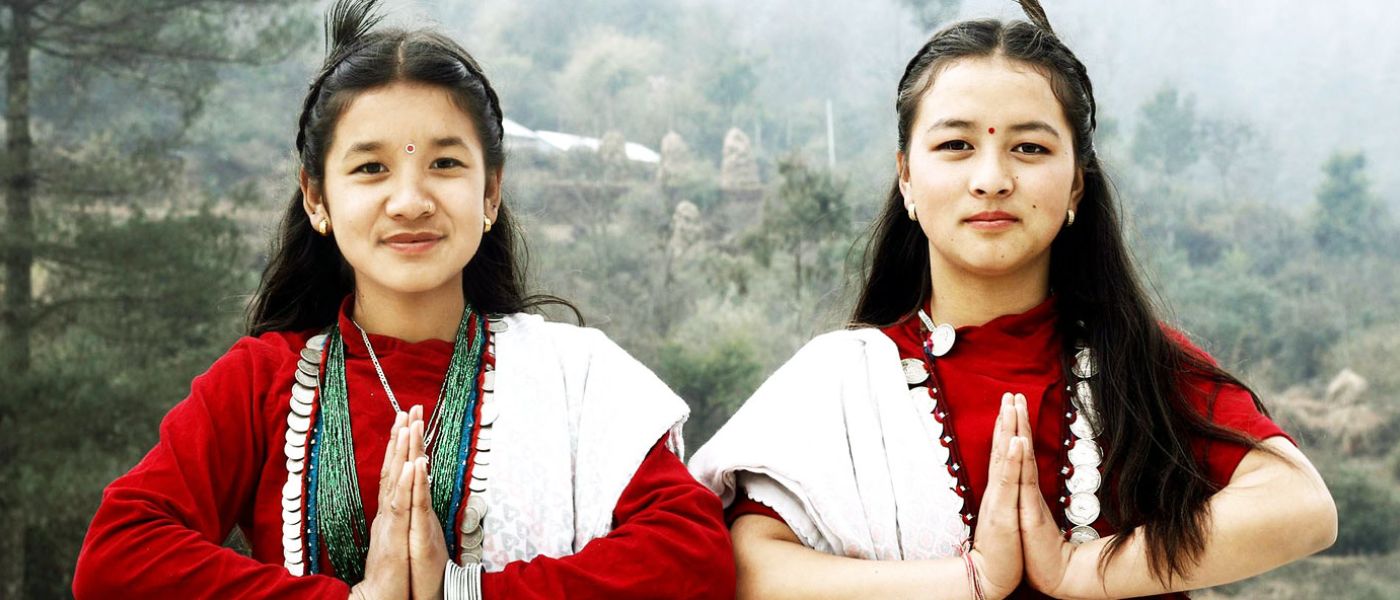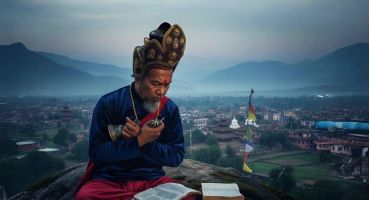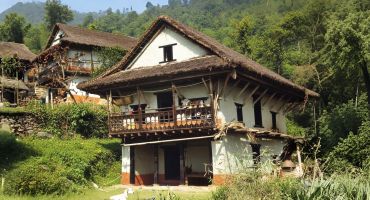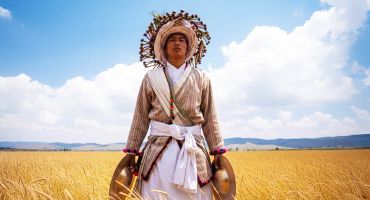The origins of the Jirel people are shrouded in mystery, inviting much speculation and complex theories about their beginnings. These theories often draw on linguistic similarities, genetic markers, and historical records that hint at possible connections with other Himalayan communities. It is therefore unsurprising that Dor Bahadur Bista, in his esteemed work “People of Nepal,” reflects on this obscurity, stating, ” Not much is really known of their origins. Some believe that they are offshoots of the Magars, others that they came from Simraungarh in the eastern Terai.” Today, the Jirels are recognized as the natives of Jiri, and they exemplify the remarkable diversity of the Himalayan region amidst modernization. According to the National population and housing census conducted by the Government of Nepal, the Jirel population numbers 6,031, making up only 0.02% of the country’s total inhabitants.
The Jirels, an Eastern Himalayan tribe, speak a unique Tibeto-Burman language bearing strong resemblances to Sherpa and Sunuwar Koit languages. The term “Jirel” finds its roots in Nepali etymology. The community originally referred to themselves as “Jirwa” or “Jirba” before the term “Jirel” became more prevalent among the Nepali populace. According to Jirel folklore, the name of the place Jiri is derived from the Jirels who settled there. The name Jiri originates from “Jie-eri,” which translates to “scary dense forest.”

Jirel oral traditions offer several conflicting accounts of their ethnogenesis. One tradition suggests that the Jirels originated from Simraungarh in the eastern Terai (Bista 1980:69). In the 14th century, Muslim invaders destroyed Simraungarh, forcing its Hindu ruling families and other survivors to become refugees (Miller 1997). After enduring many hardships in the Terai, they eventually fled to Dolakha. This narrative is particularly significant because several Jirel clans worship deities believed to reside in Simraungarh. During religious ceremonies, the Jirel priest, or Shaman known as the Phombo, summons the clan god and the spirits of clan ancestors from their original homeland, Simraungarh, to manifest in the shrine.
Another account claims that the Kirati ancestors migrated to Jiri from Simraungarh in the Terai. However, Tahal Bahadur Jirel completely rejects this idea due to linguistic evidence. While the Jirel language belongs to the Tibeto-Burmese family, it shares about 65% similarity with Sherpa and Tibetan. In fact, it shows greater similarity to the languages of the Solukhumbu and Helambu Sherpas, as well as Tibetan and Tamang languages.
A third narrative posits that the Jirels are descendants of an ancestor born from the union of a Sunuwar (Koit) man and a Sherpa woman, approximately 8 to 10 generations ago. Additionally, the blending of Jirel heritage is evident in their cultural and linguistic characteristics. They speak a distinct language called Jirel, which belongs to the Tibeto-Burman language group and shares numerous similarities with the Sherpa language. Genetic studies conducted by Sarah Williams-Blangero at Case Western Reserve University, Ohio, confirm this theory.
The Jirels are organized into 23 distinct clans, consisting of 12 major clans and 11 subclans. Mirroring the Kirati system of clan hierarchy, these subclans emerged as a result of breaches in exogamy rules. They main clans are Thungba, Deulinga, Thabo, Deppa, Sherba, Palpali, Thurbido, Chyaba, Meyokpa, Jupule, and Gara Samba. The sub-clans are Chawe Thungba, Chawe Sherpa, Chawe Jupule/Jupude, Thurbido, Chawe Thurbido, Kyambole, Tumpule, Phalbo, Garchiga, Rarenge, Jaisi, Khulal, Gharti, Rai, Chawe Thabo, Mukhiya, and Thapa.
Though the Jirels embrace Buddhism today, complete with their own monks and a sacred Gumba (monastery), they steadfastly preserve their ancient shamanic traditions. The heart of their spiritual life beats in the hands of a Phombo, a revered Jirel shaman, who performs all healing rituals and clan worship. This Phombo is believed to have the extraordinary ability to incarnate the spirits of ancestors and divine entities. Central to the Jirel worldview are the potent forces of spirit possession, ancestral veneration, and the influence of spirit forces. Alongside these practices, the Jirels honor a select pantheon of deities, with each clan venerating its own unique God (Kuldevta). Clan worship is still performed by the Phombo whereas birth rituals and rites of passage are observed according to Buddhist traditions.

The Jirels practice a polytheistic belief system, venerating multiple deities alongside their specific clan-based tutelary gods. Each clan maintains distinct ritual relationships with various deities, such as Lha, Chen, Chyomu, and Kalincho (Nangy Lha), which are worshipped independently by different clans. This reflects the intricate interconnection between Jirel cosmology and their kinship structures, where religious practices are closely tied to clan identity and ancestral veneration.
Certain Jirel clans maintain dedicated altars for the veneration of Naya, a local clan deity. These altars house a sacred box where offerings such as coins, cloth, rice, and chicken eggs are deposited. At harvest time, ritual offerings are made to Naya, with prayers for prosperity, the well-being of children, and the health of livestock. In addition to Naya worship, the Jirels also venerate Loo, a snake deity regarded as the protector of crops. As snakes naturally deter rodents, offerings are made to Loo during the harvest, symbolizing the deity’s protective role over agricultural abundance. Anthropologist H. Sidky highlights the syncretic nature of Jirel religious practices, noting their “remarkable heterodoxy” in adopting elements from Buddhism, Hinduism, and local traditions. This blending of beliefs demonstrates the Jirels’ pragmatic approach, seamlessly incorporating diverse religious concepts without emphasizing contradictions between them
Jirel traditional ceremonial ways are ancient. They may have evolved and will continue to adapt and change to new realities. While core meanings remain relatively intact, methodologies are fluid and personal. Jirel people embody a dynamic synthesis of cultural and religious practices, reflecting their complex history and diverse origins. Through their clan-based deities, shamanic traditions, and syncretic religious practices, the Jirels have retained a distinctive cultural and spiritual landscape. As they continue to navigate modernization, their rituals, belief systems, and community structure illustrate the ongoing interplay between tradition and adaptation, ensuring their heritage remains both resilient and fluid.





Good article.
Thank you.